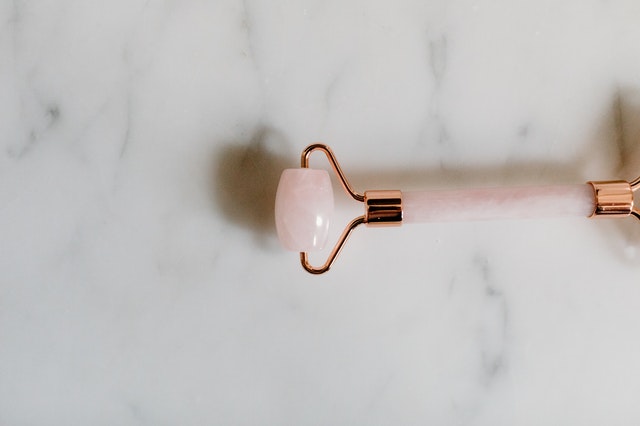Face massage rollers are a beauty fad that mechanically stimulate the muscles. Researchers observed this stimulation in terms of blood vessel size and noted several benefits.
Facial rollers are a relatively new skin care trend.
Products such as the jade roller, rose quartz roller, ice roller, and gua sha all claim to promote similar benefits: facial tension relief, increase in blood circulation, and reduced appearance of fine lines.
It seems believable when YouTube beauticians and promoters present a healthy glow with no puffiness after massage rollers. However, it is natural to consider their validity.
Do face massage rollers actually have any benefit? If so, how?
A team of researchers in Tokyo, Japan investigated what face massage rollers do to the face in the short and long term.
It is already known that stimulating the skin and muscles can increase blow flow in the area. The blood vessels expand and allow more blood to reach the skin’s surface.
However, it is unknown if these effects have benefits.
These researchers wanted to understand if there was a change in how facial blood vessels functioned overtime with the use of facial rollers.
Their findings were published in Complementary Therapies in Medicine.
They conducted two studies: one short-term and one long-term. A total of 25 people (12 men and 13 women) participated.
The subjects were free of nerve disorders, heart conditions, and eczema. They
Measuring blood flow before, after, and during a facial roller massage
In the first experiment, blood flow speed was measured before, after, and during face roller massage, in a controlled setting.
The subjects used the roller for five minutes. This short amount of time stimulated nearly 25% more blood flow.
This, impressively, lasted for more than 10 minutes only in the affected cheek.
The number of times the face massage roller was applied could not account for this blood flow; instead, it may be due to the intensity and speed of application. However, this point needs further study.
Measuring how blood vessels react to the stimulation of a face massage roller
In the second, long-term experiment, the researchers looked at how blood vessels reacted to thermal and mechanical stimulation.
The subjects massaged (i.e. mechanical stimulation) their right cheeks for a minimum of five minutes a day, for five weeks. Separately, a 40°C heat probe (i.e. thermal stimulation) was used to gauge how well blood vessels could expand and contract more easily.
It was shown that using a face massage roller improved the vessel expansion response upon heat stimulation.
That is, the vessels can release more heat when temperatures rise.
However, this response only occurs with heat stimulation, not mechanical; the facial roller does not cause this response alone.
Skin cell stress and pressure are predicted to be responsible for blood vessel expansion.
The pressure applied to them may prompt increased production of nitric oxide, a chemical that allows the vessels to expand.
Unfortunately, because the researchers could not control how hard and fast the subjects used the face massage roller, the study lacks a reason for the increased short-term blood flow.
Also, the researchers did not account for how long the blood flow response would continue, so they could not observe how the blood vessels changed back to normal size over time.
Face massage roller does increase blood flow for a certain time
Despite this, the findings point toward a local beneficial effect to the skin where the face massage roller is used.
There is increased blood flow for a finite amount of time, and greater response to heat in the long-term. However, the long-term use suggests that the vessels may become desensitized.
Written by Amrita Jaiprakash, MSc
Reference: Miyaji et al. Short- and long-term effects of using a facial massage roller on facial skin blood flow and vascular reactivity. Complementary Therapies in Medicine. 41(2018): 271-276. doi: 10.1016/j.ctim.2018.09.009
Photo by Tara Winstead from Pexels



